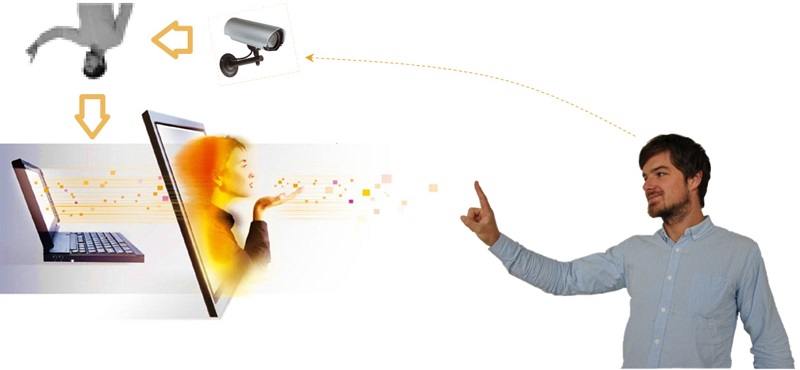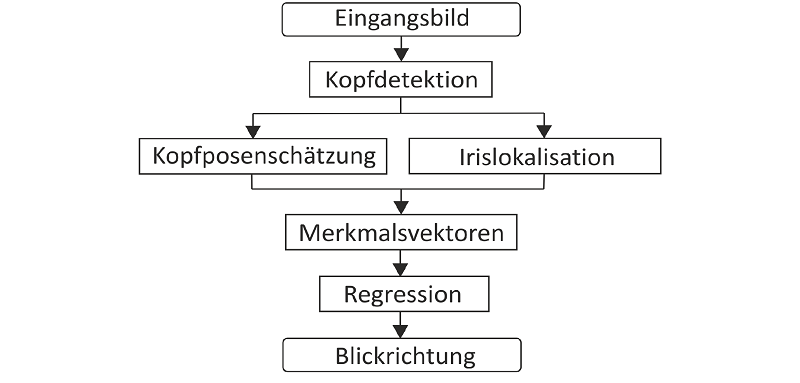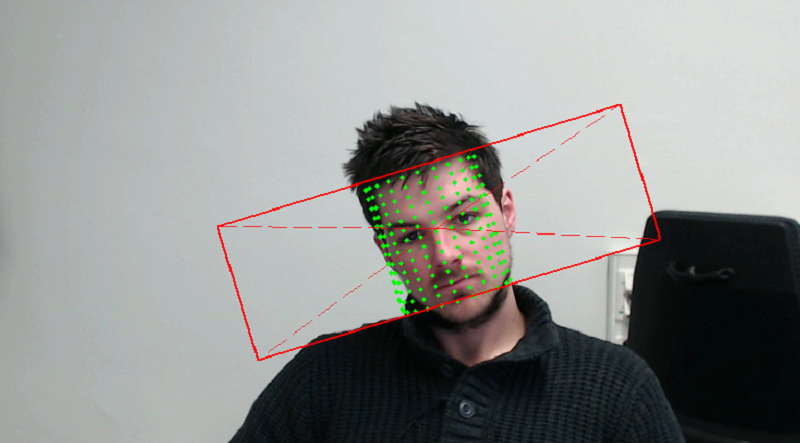Research into contactless interaction between man and machine represents an interesting challenge in the field of image processing. In order to make it easier for humans to handle machines and to extend the range of functions of the machine, it makes sense to give the machine the possibility to react to humans. An essential point here is the recognition of the line of sight.
Within this research project, algorithms and methods are to be developed that process images and video sequences in order to obtain information that can be used to make a statement about the line of sight.
A prerequisite for this is the real-time capability of the methods obtained, which enables their application in real systems.
An imaginable application in this context are digital displays, so-called Digital Signs, as found in public places. An intelligent digital display then recognizes the intentions and interests of the viewer and can analyze them in order to provide individual information for the viewer.
In order to enable a broad application of the researched methods, hardware as simple as possible, such as a webcam, should be used. Besides the challenge of having only 2D image data available, the low image quality makes further demands on the robustness of the methods.
Based on an input sequence of images, an initial detection of the head is necessary for the estimation of the direction of gaze. Subsequently, the 3D head position and the positions of the pupil centers have to be determined precisely. With the help of this information, the direction of gaze can then be inferred by regression.
The focus of this research project is especially the precise iris localization as well as robust head pose estimation based on 2D image data.
If you are interested in final theses (bachelor and master theses) and questions about the research project, please contact Sebastian Vater.



